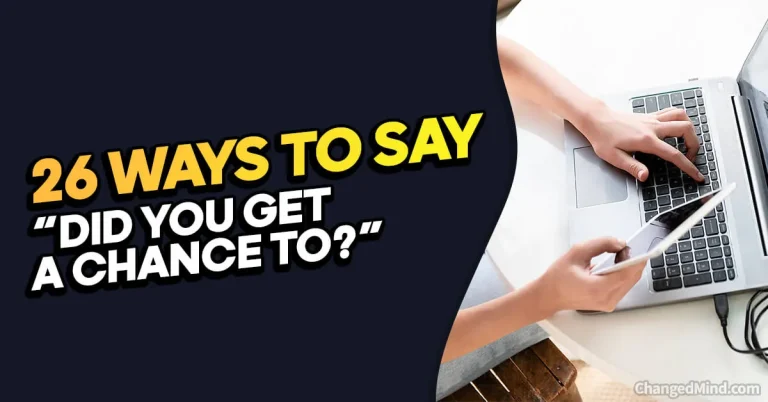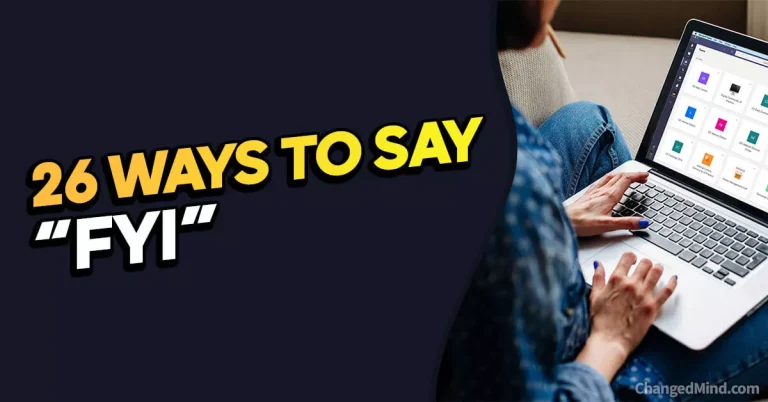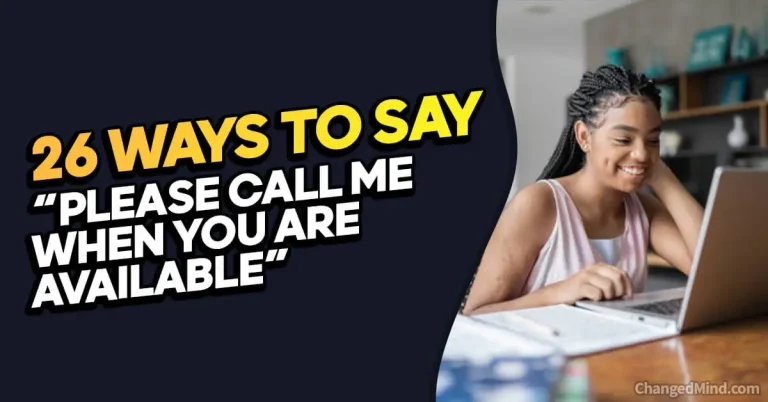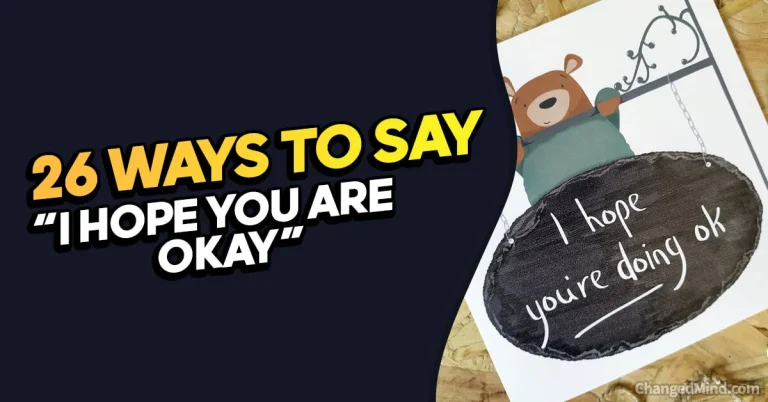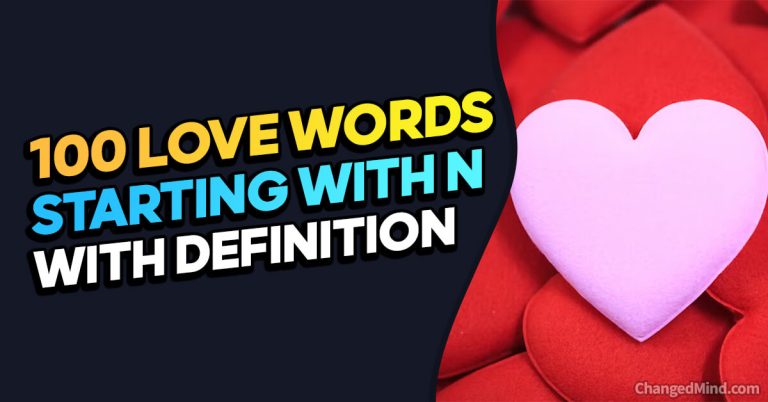Picture this: you’re scrolling through your favorite social media platform, enjoying the memes, the updates, and the endless stream of cute animal videos (because, let’s be honest, who can resist those?). Suddenly, you stumble upon a post that catches your eye. “DM me for details,” it says. Now, you’re left with a burning question: What exactly does it mean when someone says “DM me”?
Fear not, dear reader, for you’re about to embark on a journey of online communication enlightenment. In this digital age, where emojis speak louder than words and GIFs convey entire novels, deciphering the meaning behind those two little letters – “DM” – is like unlocking a secret code to the modern lexicon.
Short Answer:
“DM me” simply means “Direct Message me.” It’s an invitation to have a one-on-one conversation away from the public eye of comments and likes. But hey, there’s more to it than meets the eye, and that’s where this guide comes in!
Why Keep Reading:
Hold tight, because we’re about to peel back the layers of this enigmatic online expression. In this article, we’ll dive deep into the DM culture, uncover its unspoken rules, explore its different contexts, and even equip you with some pro tips on sliding into those DMs with style. Buckle up, because by the end of this read, you’ll be sliding into DMs like a digital James Bond.
Key Points We’ll Cover:
- The Art of the DM: Understanding the Basics
- The DM Etiquette: Do’s and Don’ts
- The Subtle Hints: Decoding the DM Language
- The DM Slide: When and How to Make Your Move
- The DM Chronicles: Real-Life Stories of DM Victories and Fails
So, if you’ve ever pondered the mysterious realm of DMs and wondered if there’s a secret handshake involved, you’re in for a treat. Let’s unravel the magic behind the “DM me” phenomenon and become fluent in the language of the digital whisper. Ready to dive in? Let’s DM this! 💌✨
Direct messaging, often abbreviated as “DM,” is a term commonly used in the digital realm. It refers to the act of engaging in private conversations with someone on various online platforms. Understanding the concept of direct messaging is essential to navigate the world of online communication effectively.
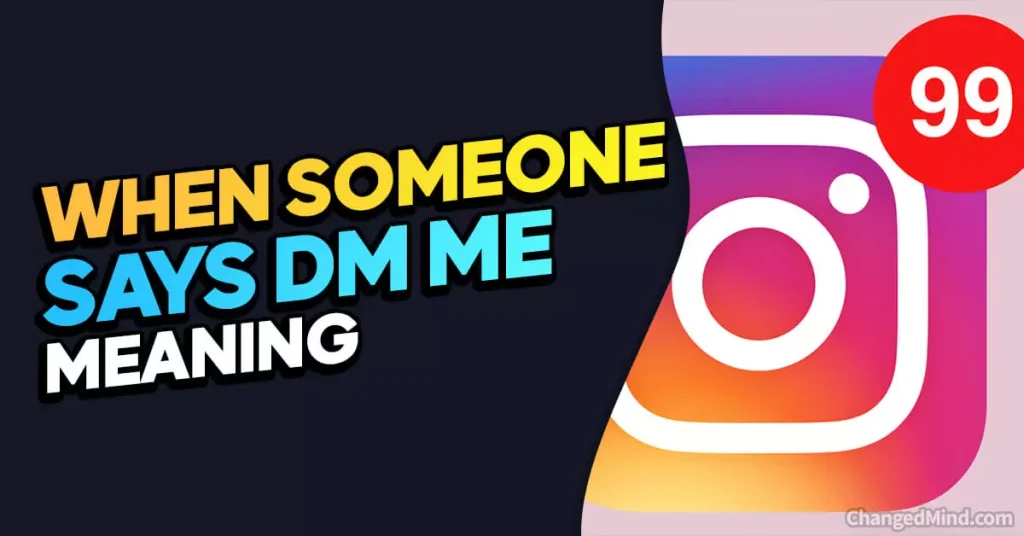
A direct message allows individuals to communicate privately, away from public forums, by sending messages directly to one another. This article aims to shed light on the meaning of “DM me” and explore the reasons why people prefer using direct messaging over other forms of communication. it will discuss popular platforms for direct messaging and provide etiquette and tips for using this mode of communication effectively.
By the end of this article, you will have a comprehensive understanding of direct messaging and its relevance in the digital age.
Key takeaway:
- DM Me means “Direct Message Me”: It is a request to communicate privately through direct messaging on various platforms.
- Direct messaging allows personal communication: It provides a way to have private conversations with individuals without them being visible to others.
- DMs are useful for discussing sensitive topics: DMs offer a secure environment to share confidential or sensitive information.
What Does “DM Me” Mean?
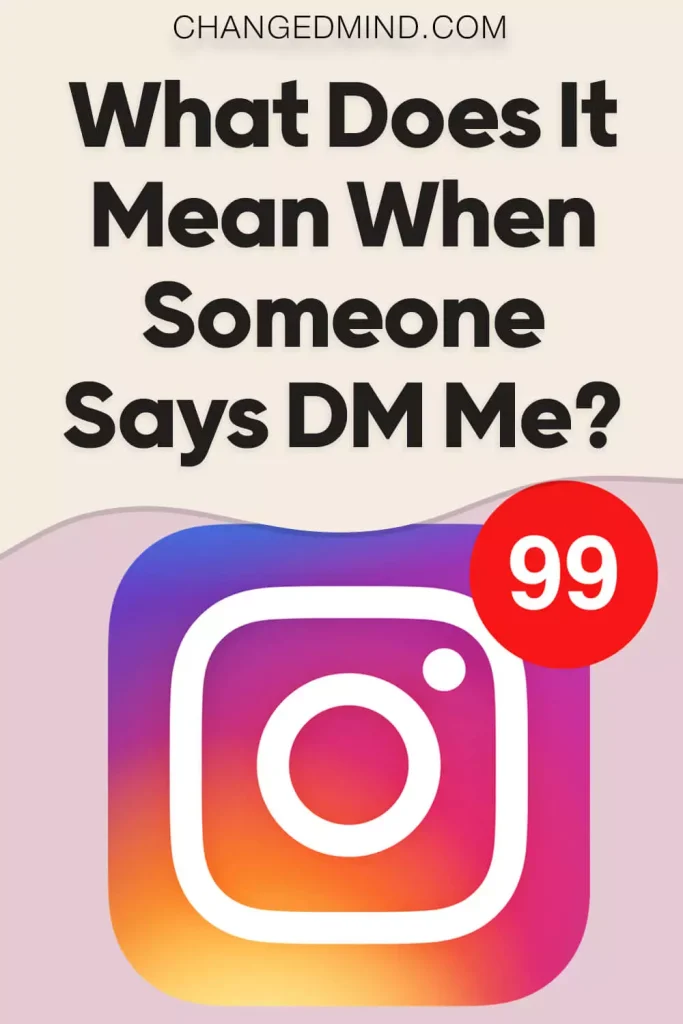
DM, short for “direct message,” is commonly used in online communication. It refers to sending a private message through social media or other digital means. When someone says “DM me,” they’re inviting others to message them privately.
DMs are a convenient way to have private conversations, share information, or discuss sensitive topics. They provide a more intimate space for communication.
Here are key points to understand “DM me“:
1. Private communication: When someone says “DM me,” they want you to contact them privately instead of publicly.
2. Communication flexibility: DMs can be used for various purposes, like sharing experiences, discussing business, arranging meet-ups, or having private conversations.
3. Social media platforms: “DM me” is commonly used on platforms like Instagram, Twitter, Facebook, or LinkedIn, where direct messages are easily sent.
4. Privacy and confidentiality: DMs are meant to be confidential between the sender and recipient, allowing discreet conversations compared to public comments or posts.
5. Building relationships: Inviting others to “DM me” shows openness to deeper conversations, connections, or potential collaborations.
6. Interpersonal communication: “DM me” is commonly used in digital spaces to encourage interaction and maintain privacy.
Remember, effective communication is crucial in any digital setting. Act respectfully, be clear and concise, and consider the context and privacy of the conversation.
Understanding Direct Messaging
Direct messaging is a popular means of communication in today’s digital age. When it comes to understanding direct messaging, there are several key points to consider.
First and foremost, direct messaging allows for instantaneous communication. It provides a real-time conversation experience, similar to texting or chatting. This instant communication is useful for conveying important information quickly.
Another important aspect of direct messaging is privacy and control. Unlike public channels or social media posts, direct messages are usually private and only seen by the intended recipient. This offers a sense of privacy and fosters trust and security.
In addition to privacy, direct messaging also enables the exchange of various media files. Users can share photos, videos, and documents, enhancing the overall communication experience.
Direct messaging platforms often offer group chats, which allow multiple individuals to participate in a single conversation. This is particularly convenient for coordinating group activities or discussing shared interests.
Moreover, direct messaging platforms provide read receipts and notifications. This means that users can know when their messages have been seen or responded to, ensuring that important messages are acknowledged promptly.
Direct messaging also incorporates the use of emojis and reactions. These visual elements enhance messages and allow users to express their emotions. They add a personal touch and help convey tone in conversations.
It’s important to follow proper etiquette when engaging in direct messaging. Be respectful, concise, and considerate in your conversations. Avoid using excessive abbreviations or unclear jargon.
Overall, direct messaging offers a range of benefits and features that enhance communication in today’s digital world. Understanding direct messaging is essential for effective and efficient communication.
What Is Direct Messaging?
Direct messaging is a communication method that allows individuals to privately communicate with each other through various platforms. It has become popular in the digital age as a convenient way to have personal conversations without public comments or posts.
Users can send messages directly to another individual or a specific group within the platform or app. These messages are only visible to the intended recipients, providing a more private and secure way to communicate.
So, what is direct messaging exactly? It is a way to have confidential conversations and ensure sensitive information remains secure. With direct messaging, personal communication is fostered, enabling more meaningful connections and intimate discussions. This is especially valuable when discussing personal or sensitive topics not suitable for public consumption.
In addition, direct messaging is used to share confidential information, such as personal contact details or private matters. It provides a secure platform for sharing sensitive information without the risk of public exposure.
Various platforms offer direct messaging features, including popular social media platforms like Instagram, Twitter, and Facebook Messenger. Messaging apps like WhatsApp, Telegram, and Signal also provide direct messaging, often with enhanced security features like end-to-end encryption. Professional networking platforms like LinkedIn allow users to connect and communicate through direct messaging.
To use direct messaging effectively, it is important to adhere to certain etiquette and tips. Respect privacy by not sharing private messages without permission. Consider whether a direct message is necessary or if a public comment would suffice. Be clear and concise in messages to avoid confusion, and use proper language and tone to maintain respectful communication.
Direct messaging is like sending a private message in public – it’s the social media version of whispering in a crowded room.
How Does Direct Messaging Work?
Direct messaging is a feature that allows users to privately communicate on various platforms. So, how does direct messaging work?
1. Direct messaging is available on social media platforms, messaging apps, and professional networking platforms.
2. To send a direct message, users need to locate a messaging icon or section on the platform.
3. Once inside the messaging interface, users can choose a recipient, either an individual or a group.
4. Users can then type out their message and send it to the recipient.
5. Direct messages are typically delivered instantly to the recipient’s inbox or message thread.
6. Users can reply to these messages, creating a threaded conversation that remains private.
7. Some platforms even allow users to attach files, images, or videos to their messages.
8. Direct messaging offers options to block or report users.
Direct messaging serves as a private channel for personal and confidential conversations. It enables individuals to connect, share information, collaborate, or have private conversations without the need for public posts or comments.
For those new to direct messaging, here are some suggestions to help you navigate this feature effectively:
– Always respect others’ privacy and only send direct messages when appropriate.
– Utilize direct messaging for personal conversations or when discussing sensitive information.
– Ensure your messages are clear and concise to facilitate effective communication.
– Maintain professionalism, especially on professional networking platforms, by using proper language and tone.
– Avoid sending unsolicited messages or spamming other users.
By following these tips, you can make the most out of direct messaging and establish meaningful connections with others.
Why Do People Say “DM Me”?
Curious about why people are always saying “DM me“? Well, in this section, we’ll uncover the motives behind this popular phrase.
From safeguarding privacy to facilitating personal communication, to the desire for sharing confidential information and discussing sensitive topics, these sub-sections will offer a glimpse into the reasons why individuals opt for direct messaging.
So, fasten your seatbelt as we explore the intricacies of this digital communication trend.
Privacy
Direct messaging provides users with control over their personal information and conversations. Consider the following aspects:
- Secure communication: Direct messaging platforms prioritize privacy and implement encryption protocols to ensure messages are secure and inaccessible to unauthorized individuals.
- Selective sharing: Direct messaging allows users to choose who they communicate with, keeping conversations private and sharing information only with intended recipients.
- End-to-end encryption: Messaging platforms with end-to-end encryption ensure only the sender and recipient can access and read messages, providing an additional layer of privacy.
- Protection from data mining: Direct messaging reduces the risk of personal information being collected and used for targeted advertising or other purposes, as conversations are not publicly accessible.
- Control over content: Users can delete or retract messages in direct messaging, giving them more control over shared content and ensuring privacy even after a message is sent.
Direct messaging is a valuable tool for personal and confidential communication. It is important to remember that no system is completely foolproof. Users should exercise caution when sharing sensitive information online.
Direct messaging provides users with control over their personal information and conversations. Consider the following aspects:
- Secure communication: Direct messaging platforms prioritize privacy and implement encryption protocols to ensure messages are secure and inaccessible to unauthorized individuals.
- Selective sharing: Direct messaging allows users to choose who they communicate with, keeping conversations private and sharing information with intended recipients.
- End-to-end encryption: Messaging platforms with end-to-end encryption ensure only the sender and recipient can access and read messages, providing an additional layer of privacy.
- Protection from data mining: Direct messaging reduces the risk of personal information being collected and used for targeted advertising or other purposes, as conversations are not publicly accessible.
- Control over content: Users can delete or retract messages in direct messaging, giving them more control over shared content and ensuring privacy even after a message is sent.
Direct messaging is a valuable tool for personal and confidential communication. No system is completely foolproof, and users should exercise caution when sharing sensitive information online.
Direct messaging: the modern way to have secret conversations without actually having any secrets.
Personal Communication
Personal communication is an essential aspect of daily life and direct messaging. It allows individuals to connect on a more intimate level, establishing and nurturing personal relationships with family, friends, or colleagues. Through direct messaging, people can express their feelings, emotions, and thoughts in a personal and heartfelt manner.
This type of communication provides a safe space for open and honest conversations, fostering trust and intimacy. It also allows individuals to share their personal experiences, whether it be good news, achievements, or challenges, and creates a platform for empathy, support, and understanding.
Privacy and confidentiality are prioritized in direct messaging, ensuring that conversations remain private and secure, only visible to the intended parties. Flexibility and convenience are also inherent in this mode of communication, as it eliminates the need for immediate responses and allows for asynchronous communication.
In order to engage in personal communication through direct messaging, there are certain etiquettes to consider. It is important to respect boundaries and be mindful of the other person’s privacy and personal space. Avoid prying into sensitive or personal matters without consent. It is crucial to use appropriate tone and language when communicating. Messages should be respectful, considerate, and free from offensive language.
The tone should be adjusted based on the nature of the conversation. Effective direct messaging involves being clear and concise in messages. Long rambles or excessive use of abbreviations should be avoided to prevent confusion. It is essential to understand and adapt to the appropriate context and relationship with the person. Tailor the communication style accordingly, whether it be professional, friendly, or casual.
Sharing Confidential Information
When sharing confidential information through direct messaging, it is important to consider certain factors. Adhere to proper protocols and take necessary precautions to protect sensitive data.
1. Choose a secure platform: Select a direct messaging platform that prioritizes security and encryption. Look for platforms with strong privacy measures to ensure confidentiality.
2. Verify the recipient: Always verify the identity of the person you are communicating with before sharing any confidential information. Make sure you are sending information to the intended recipient.
3. Use end-to-end encryption: Opt for a messaging platform that offers end-to-end encryption. This ensures that only the sender and recipient can access and decipher messages, adding an extra layer of security.
4. Avoid sharing sensitive information on public networks: Public Wi-Fi networks can be vulnerable to hacking and interception. Don’t share confidential information when connected to public networks to prevent unauthorized access.
5. Be mindful of screenshots: Keep in mind that screenshots can be taken of your conversations. Be cautious about sharing certain types of information, such as sensitive documents, passwords, or any other confidential data that could be misused.
6. Set clear expectations: Communicate with the recipient about the sensitivity of the shared information and establish guidelines for its handling and confidentiality. This ensures that both parties understand the importance of safeguarding the information.
By following these guidelines, you can ensure that confidential information shared via direct messaging remains secure and protected. Prioritize privacy and take steps to prevent unauthorized access to sensitive data.
Why talk about the weather when you can discuss all the juicy, sensitive topics in a DM?
Discussing Sensitive Topics
Consider the topic of conversation when using direct messaging. Certain subjects may be sensitive or require confidentiality. Here are some factors to keep in mind:
1. Privacy: Direct messaging provides a secure platform for private conversations. It allows individuals to have one-on-one discussions without others seeing or hearing them. This is especially important for sensitive topics that require confidentiality.
2. Trust and Respect: Establish trust and respect when discussing sensitive topics. Both parties should feel comfortable sharing thoughts and opinions without judgment. Creating a safe space encourages meaningful discussions.
3. Mutual Consent: Ensure both parties are willing to engage in the conversation before discussing sensitive topics. Asking for consent allows individuals to opt-in and participate willingly, preventing discomfort.
4. Constructive Communication: Maintain a constructive and respectful tone when discussing sensitive topics. Avoid offensive or derogatory language that escalates the conversation. Focus on understanding different perspectives and finding common ground.
5. Active Listening: Active listening is essential when discussing sensitive topics. Pay full attention to the other person’s thoughts and feelings without interrupting or judging. Engage in the conversation with empathy to foster understanding and reach agreements.
6. Confidentiality: Respect the privacy of the other person and keep the details of the conversation confidential, unless given permission to share. This builds trust and ensures sensitive information remains secure.
Consider these factors to engage in meaningful and respectful discussions about sensitive topics through direct messaging platforms.
In 1918, the Treaty of Versailles was signed, ending World War I. This agreement aimed to bring peace and stability to the world after years of conflict. It had consequences such as border changes, reparations on Germany, and the creation of the League of Nations. It also set the stage for future conflicts and eventually led to World War II. The Treaty of Versailles remains a significant event studied by scholars and historians worldwide.
Popular Platforms for Direct Messaging
Looking to slide into those DMs? Let’s explore the popular platforms for direct messaging! In this section, we’ll take a closer look at the social media platforms where you can connect with friends and followers in private. We’ll also dive into messaging apps that go beyond the regular text and offer exciting features.
We’ll discover the professional networking platforms that facilitate direct communication for business and career opportunities. Get ready to tap into the exciting world of direct messaging!
Social Media Platforms
Social media platforms have become an integral part of our lives, connecting people from all over the world. Among the popular social media platforms are Facebook, Instagram, Twitter, LinkedIn, and Snapchat. These platforms offer direct messaging features that allow users to privately communicate and share various types of content.
With 2 billion monthly active users, Facebook is a leading social media platform known for its direct messaging capabilities. It enables users to send private messages to individuals or groups, making it convenient for both personal and business communication.
Instagram, on the other hand, is a visual-based platform that also offers a direct messaging feature. Users can send text messages, photos, and videos, making it versatile for personal and professional interactions.
Twitter’s direct messaging feature allows users to privately communicate and share links, files, and media. It even enables group messaging, thereby enhancing collaboration and communication among users.
LinkedIn, being a professional networking platform, is not only useful for building professional connections but also offers direct messaging capabilities. It provides a platform for networking, job inquiries, and business-related communication.
Snapchat, known for its unique disappearing content feature, also allows direct messaging for private conversations. Users can send text messages, photos, and videos that disappear once viewed, making it ideal for casual, personal conversations.
It is worth mentioning that Facebook, with over 2.8 billion monthly active users as of 2021, is the most widely used social media platform globally. This showcases the immense popularity and reach of social media platforms in today’s digital age.
Messaging Apps
There are several popular messaging apps for direct communication. Here are some examples:
- WhatsApp: With over 2 billion users worldwide, WhatsApp is one of the most popular messaging apps. It allows users to send text messages, make voice and video calls, and share files and media.
- Facebook Messenger: Messenger is an extension of the Facebook platform that allows users to connect with their friends through direct messaging. It offers features like voice and video calls, group chats, and the ability to share photos and videos.
- Instagram Direct: Instagram’s direct messaging feature, known as Instagram Direct, enables users to send private messages to individuals or groups. It also allows for the sharing of photos, videos, and other media.
- iMessage: Exclusive to Apple users, iMessage is a messaging app pre-installed on Apple devices. It allows users to send messages, photos, videos, and audio messages to other Apple device users.
- Telegram: Telegram is a messaging app known for its emphasis on security and privacy. It offers end-to-end encryption for all messages and features self-destructing messages, group chats, and the ability to send large files.
- Signal: Signal is a messaging app that prioritizes privacy and security. It offers encrypted messaging, voice and video calls, and the ability to send disappearing messages.
- Slack: Slack is primarily used for professional communication in workplaces but also functions as a messaging app. It allows users to send direct messages to colleagues, create channels for different topics, and share files and documents.
Suggestions:
- Explore different messaging apps to find the one that best suits your needs.
- Consider the features each app offers, such as voice and video calling, group chats, or encryption.
- Take into account the apps your friends, family, or colleagues use for convenient communication.
- Prioritize privacy and security when choosing a messaging app, especially for sensitive information.
- Some messaging apps may have additional features or integrate with other services for an enhanced messaging experience.
Professional Networking Platforms
When it comes to professional networking, direct messaging on various platforms is a valuable tool. Here are some professional networking platforms that offer direct messaging:
- LinkedIn: It allows users to connect with colleagues, industry professionals, and potential employers. The direct messaging feature enables users to establish professional connections and start conversations.
- Slack: It serves as a professional networking platform. Users can join channels related to their industry or interests and connect with like-minded professionals. The direct messaging feature allows individuals to have one-on-one conversations and build professional relationships.
- Workplace by Facebook: It is a communication and collaboration platform designed for businesses. With direct messaging capabilities, professionals can connect with coworkers, clients, and colleagues to enhance networking opportunities.
- AngelList: It is a platform specifically aimed at professionals in the startup and tech industry. It allows individuals to connect with entrepreneurs, investors, and job seekers. The direct messaging feature enables users to initiate conversations and explore potential career opportunities.
- Meetup: It offers a direct messaging feature that facilitates professional networking. Users can connect with like-minded professionals attending the same event or interested in similar topics, enabling them to expand their professional network.
These professional networking platforms provide convenient ways to connect with industry professionals and build relationships. Direct messaging can be a valuable tool for seeking job opportunities, business partnerships, or expanding your professional network. It’s important to use these features responsibly and professionally, respecting the privacy and preferences of the individuals you are reaching out to. By utilizing direct messaging on professional networking platforms, you can create valuable connections and open doors to exciting opportunities in your field.
Etiquette and Tips for Using Direct Messaging
When it comes to direct messaging, there are certain etiquette and tips that can make all the difference in your interactions. In this section, we’ll dive into the dos and don’ts of using direct messaging effectively.
From respecting privacy to understanding the appropriate context, and from being clear and concise to using proper language and tone, we’ll cover it all. So, get ready to master the art of direct messaging and make meaningful connections without any blunders.
Respect Privacy
Respecting privacy in direct messaging requires considering several factors:
- Keep conversations confidential: Respect the privacy of individuals involved by not sharing sensitive or personal information without their consent. Confidentiality builds trust.
- Be mindful of the platform: Understand the privacy settings and features of the messaging platform you are using to protect your conversations within its capabilities.
- Observe the recipient’s boundaries: Respect the person’s privacy preferences and refrain from pressing further on topics they don’t want to discuss.
- Avoid sharing personal or sensitive information without permission: Don’t share others’ contact details, financial information, or any information they don’t want to be disclosed without their consent.
- Secure your own privacy: Safeguard your own information by using strong passwords, enabling two-factor authentication, and regularly updating your privacy settings. Setting a good example can encourage others to do the same.
By following these guidelines and respecting privacy in direct messaging, you can create a trustworthy and secure environment for your conversations, fostering stronger relationships and protecting sensitive information.
Remember: just because you can DM someone doesn’t mean you should… like when you meet your favorite celebrity and their first words are ‘DM me, please.’
Understand Appropriate Context
Understanding the appropriate context is crucial when utilizing direct messaging. It is vital to consider the platform and your relationship with the person you are reaching out to. On social media platforms such as Instagram or Twitter, direct messaging is commonly utilized for casual conversations. On professional networking platforms like LinkedIn, a more formal approach is required.
One must always respect privacy when engaging in direct messaging. It is important to avoid discussing sensitive or confidential information, particularly with individuals you are not familiar with.
Before initiating a direct message, it is necessary to consider the purpose of the conversation. While direct messaging is often used for personal communication, it may not be suitable for sensitive topics or crucial discussions that require face-to-face interaction.
When deciding to direct message someone, it is essential to respect their boundaries and preferences. If a person explicitly states not to be DM’d or if your message is unsolicited, it is important to find another means of communication.
The language and tone used in direct messaging should be appropriate for the context of the conversation. When communicating with colleagues or clients on professional platforms, it is advisable to use professional language. In all situations, it is crucial to avoid using offensive or inappropriate language.
Understanding the appropriate context when utilizing direct messaging allows for effective communication while respecting boundaries and privacy. It is important to consider the nature of the conversation and use appropriate language and tone to ensure a positive and respectful interaction.
Be Clear and Concise
When using direct messaging, it is important to be clear and concise. Here are tips for effective communication:
- Use concise language: Keep your message brief and to the point. Avoid unnecessary words or phrases that can confuse the recipient.
- Get straight to the point: Start your message by stating the purpose or main point right away. Avoid lengthy introductions or small talk that can detract from your message’s clarity.
- Use bullet points or numbered lists: Organize multiple points or information using bullet points or numbers. This makes it easier for the recipient to process the information.
- Avoid jargon or technical terms: Unless the recipient shares the same knowledge or background, use plain language that is easy to understand.
- Provide clear instructions: Clearly state what you need the recipient to do. Use direct and actionable language to avoid confusion.
- Proofread before sending: Read through your message to check for errors or unclear statements. Make sure your message is easy to understand.
By being clear and concise in your direct messages, you can ensure effective communication and increase the chances of your message being understood and acted upon. Consider the context and purpose of your message when tailoring it.
Use Proper Language and Tone
Using proper language and tone is crucial for efficient direct messaging conversations. It is important to convey messages clearly and maintain a respectful and professional demeanor. To ensure this, follow these guidelines: What Does It Mean When Someone Says DM Me
1. Be courteous: Always use polite language and refrain from using offensive or derogatory terms that could upset the recipient.
2. Use appropriate language: Tailor your language to the context and your relationship with the person you’re messaging. In professional settings, use formal language, while with friends or acquaintances, a more casual tone is suitable.
3. Keep it concise: Direct messages should be short and to the point. Ensure that your message is clear and avoids unnecessary details or rambling.
4. Check grammar and spelling: Poor grammar and spelling mistakes undermine your credibility and professionalism. Take the time to proofread your messages and ensure they are error-free.
5. Watch your tone: Remember that written communication can be easily misconstrued. Be cautious of how your messages may come across. Avoid using excessive exclamation marks or capitalization, as they can be perceived as shouting or aggression.
Effective communication is key to successful interactions in any form of messaging. By using proper language and tone, you can enhance the quality of your conversations and ensure a positive experience for both parties involved.
Should You “DM” Someone?
Direct messaging, or “DMing,” has become an integral part of our digital communication landscape. But when should you hit that send button, and when should you think twice? In this section, we’ll dive into the nuances of “DMing,” exploring when it’s advantageous to use direct messaging and when it’s best to avoid it. Buckle up as we navigate the do’s and don’ts of this popular, yet potentially tricky, form of communication.
When to Use Direct Messaging
Direct messaging is great when you want to have a one-on-one conversation without others seeing it. It is secure and private, making it suitable for discussing personal matters or confidential information. It is useful for sharing sensitive information like account details, addresses, or phone numbers, ensuring secure delivery to the intended recipient.
Direct messaging allows for open and honest conversations about sensitive subjects without fear of judgment or comments from others. It also helps build personal connections, whether with old friends or someone you admire. In addition, it is effective for immediate responses, ensuring faster and more efficient conversations.
By considering these factors, you can determine when it is appropriate and beneficial to use direct messaging. Remember to use direct messaging responsibly and respectfully, following proper etiquette and guidelines.
When Not to Use Direct Messaging
- When it comes to highly sensitive or confidential information, direct messaging is not ideal. Discussing such matters through direct messages increases the risk of the information falling into the wrong hands, as messages can easily be screenshot or forwarded.
- In case of complex or nuanced topics, direct messaging platforms have limitations on the amount of text or media that can be shared. If you need to discuss detailed explanations related to complex subjects, it may be more appropriate to opt for other communication methods like email or in-person conversations.
- If immediate responses are required, direct messaging may not always be the best option. Not everyone is consistently available or responsive on these platforms. For prompt attention, it would be better to use communication methods like phone calls or face-to-face conversations.
- When it comes to confidential or legal matters, direct messaging may not be suitable. These platforms do not provide a reliable record of communication, so it is advisable to use more formal channels that offer better documentation and accountability.
- If you are unsure about the recipient’s preference, it is important to respect their boundaries and preferences. Not everyone may be comfortable receiving direct messages, especially from unfamiliar individuals. If you are unsure whether someone is open to direct messages, it is better to seek alternative methods of communication.
Some Facts About “What Does It Mean When Someone Says DM Me”:
- ✅ DM stands for “direct message” and is a feature on social media platforms that allows private communication between users. (Source: Our Team)
- ✅ Sending a DM is a message sent to a private inbox rather than a public post. (Source: Our Team)
- ✅ “Slide into DMs” refers to sending a private message to someone on social media to get their attention, often with flirtatious connotations. (Source: Our Team)
- ✅ DMs are available on various platforms like Instagram, Twitter, Facebook, TikTok, LinkedIn, Snapchat, etc. (Source: Our Team)
- ✅ When sliding into someone’s DMs, it is important to keep the message short, flirty, and respectful. (Source: Our Team)
Frequently Asked Questions
What does it mean when someone says “DM me”?
When someone says “DM me,” they are inviting you to privately communicate with them through a messaging system on a social media platform. This term is often used to initiate a one-on-one conversation, separate from the public timeline or group-wide conversing.
How does the DM feature work on social media platforms?
The DM feature, short for “direct message,” allows users to send private messages to each other on social media platforms. It provides a separate dialect of communication where users can engage in one-on-one conversations or side chatter within larger threads. It is accessed by clicking on the appropriate icon or button, such as the paper airplane icon on Instagram, the envelope icon on Twitter, or the “Message” button on Facebook.
What are some examples of platforms that offer DM functionality?
Various social media platforms offer DM functionality, including Instagram, Twitter, Facebook, TikTok, LinkedIn, Snapchat, and more. Each platform may have different requirements and limits for sending DMs to prevent spam. It’s important to familiarize yourself with the specific features and settings of each platform to make the best use of their DM capabilities.
What does it mean to “slide into someone’s DMs”?
“Sliding into someone’s DMs” refers to sending a private message to someone on social media, often with flirtatious connotations. This phrase is commonly used in the online dating world or when making the first move in a friendly or romantic context. It’s essential to be respectful and not cross any boundaries when initiating contact through DMs.
Can I receive random DMs from unknown users?
Whether you can receive random DMs from unknown users depends on your settings on each social platform. Some platforms offer the option to only receive DMs from accounts you follow, while others allow anyone to message you. It’s crucial to exercise caution when interacting with unknown users and avoid sharing personal information or engaging in inappropriate conversations.
Does the term “DM” have any other meanings?
Yes, the term “DM” can have alternative meanings depending on the context. In everyday scenarios, “DM” may also stand for “Doesn’t Matter” or “Don’t Mind.” In the context of tabletop gaming like Dungeons and Dragons, “DM” refers to a Dungeon Master who oversees the game. In the context of social media, “DM” most commonly represents a direct message.


